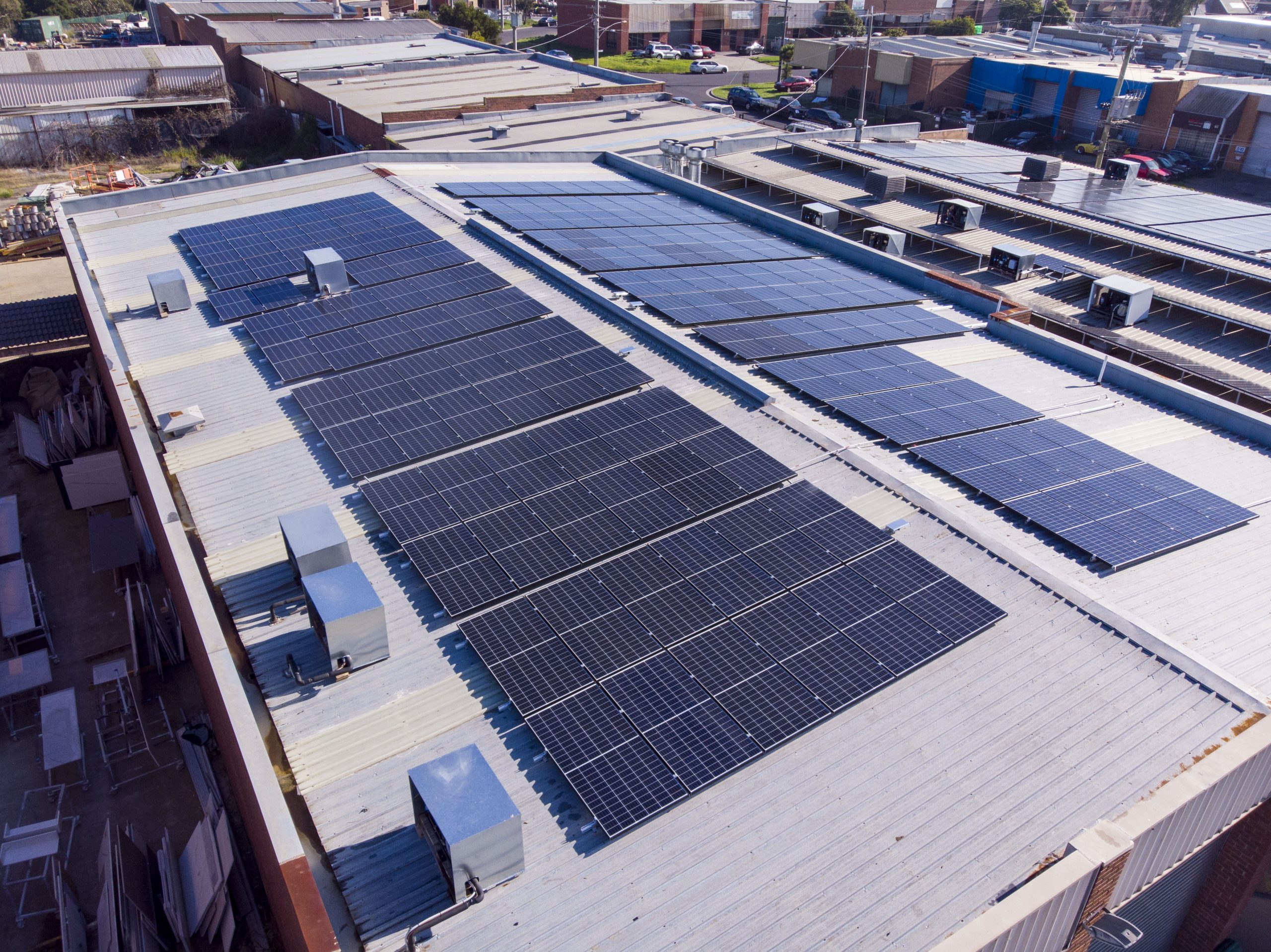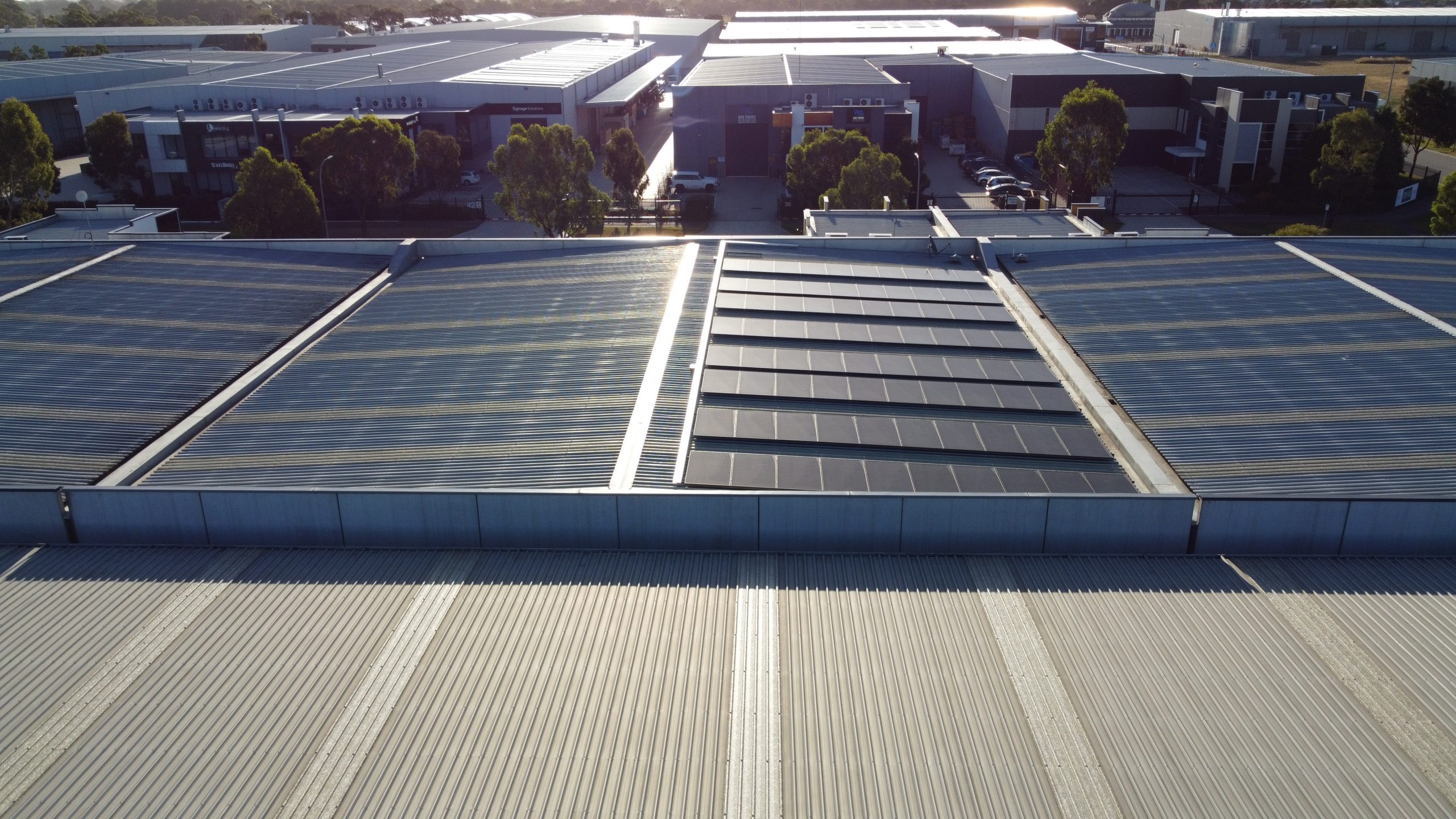No matter whether you’re running a café or a conglomerate, solar systems can be a smart business decision. 9-5 businesses, in particular, are ideal candidates for solar installations. With our commercial solar panel systems, we guarantee to get your business cashflow positive from day 1.
Reputational benefits of solar are also increasingly important as more customers chose to spend their money with businesses that are taking tangible steps to reduce their carbon footprint.
Cost is no longer the barrier it used to be. Solar panel prices have dropped 80 per cent in the last 10 years. Attractive government solar rebates for businesses reduce upfront costs by 30-40 per cent. Low-cost solar financing options – both on and off-balance sheet – can be tailored to meet your business requirements.
Whichever way you look at it, solar is good for business.
Fill out the form below for personalised recommendations and quotes.

Our starting point for sizing a business solar power system is to review actual data on electricity consumption. Looking at a recent electricity bill gives a rough idea. But it’s far more accurate to use the 30 minute interval data from your network distributor. This shows exactly how much electricity is used each hour throughout the day and how this varies over a year.
It’s the most accurate way of sizing a commercial solar panel system.


Here’s a quick guide to the size of solar power system for businesses, based on average day electricity usage.
Calculating the right size solar system for business
| Average daily electricity usage, kilowatt hours | Size of solar power system |
| 40 – 140 kWh | 10 – 40 kW |
| 140 – 360 kWh | 40 – 100 kW |
| 360 kWh or more | 100kW + |
Solar power systems under 100kW from approved solar retailers like Solar Run are eligible for the federal government solar panels rebate known as Small-scale Technology Certificates (STCs).
STCs reduce the upfront cost of solar panels systems by 30-40 per cent, with the variation depending on where your business is located in Australia.
Value of Small-scale Technology Certificates varies by Zone
Solar installations in the sunnier parts of Australia generate more solar power than those in our southern states. That’s why solar systems installed in Zone 1 in Queensland, for instance, have a higher STC value than those installed in Tasmania which is in STC Zone 4.
Value of STC discount for 40kW and 100kW commercial solar systems
| 40kW Solar System STC discount | 100kw Solar System STC discount | |||
| Amount STC Certificates | STC Rebate amount ex GST | Amount STC Certificates | STC Rebate amount ex GST | |
| Victoria | 426 | $15,762 | 1065 | $39,405 |
| NSW | 497 | $18,389 | 1242 | $45,954 |
| Queensland | 497 | $18,389 | 1242 | $45,954 |
| South Australia | 497 | $18,389 | 1242 | $45,954 |
| Perth | 497 | $18,389 | 1242 | $45,954 |
| Tasmania | 426 | $15,762 | 1065 | $39,405 |
| Northern Territory | 552 | $20,424 | 1381 | $51,097 |
STCs work as an upfront discount, so the price for commercial solar power system under 100kW is generally quoted net of STCs.
Each year the value of STCs drops by around 7 per cent. This will continue until the end of 2030 when the STC rebate is completely phased out. Purchasing solar now is a sensible move if you want the rebate at its current high value.
LGCs are a valuable federal government solar incentive for businesses installing solar panels larger than 100kW. They work differently from STCs in that LGCs are paid out every 6 months based on the generation of your solar system. One LGCs is created for every megawatt hour of electricity your system generates. As a result, LGCs are not tied to the STC Zoning system and the rate paid for LGCs is different from STCs.
Businesses can choose to trade their LGCs themselves, but generally it is more efficient to enter into an agreement where this is handled for you. At Solar Run we take care of the LGCs for our commercial clients, saving your time and money.
Like STCs, the LGCs will phased out by 31 December 2030. Acting now makes sense.
Some states, including Victoria, currently offer attractive solar rebates for businesses. At times, federal and state governments will announce solar rebates for specific industry sectors. These rebates can be extremely attractive. For example, a recent Agriculture Victoria On-Farm Energy Grant subsidised the cost of eligible solar panel installations by up to 50 per cent.This is a fast-changing area with new rebates and incentives often announced at short notice. Get in touch with our commercial solar experts to find out what solar rebates your business can apply for.
Here’s a guide to the bill savings for different size commercial solar panel systems, as well as the ROI you could expect.
Prices, bill savings and ROI for different size commercial solar systems
| Price | Daily solar generation | Yearly savings, approx | ROI | |
| 40kW solar system | $20,000-$30,000 (net of STC rebate) | 140kWh | $13,200 | 2-3 years |
| 100kW solar system | $70,000-$90,000 (net of STC rebate) | 360kWh | $28,000 | 3-4 years |
| 100kW+ solar system | $1,200 per kW installed | 360kWh (per 100kW installed) | $28,000 (per 100kW installed) | 4-5 years |
Note: All figures are approximates. Prices are subject to change without notice.
The big debate is: what’s the best way to pay for your solar system? With systems under 40kW having an excellent return on investment and with pricing so low, we find most small businesses choose to pay cash. Cash gives the best ROI, but of course it reduces the amount of money available for other business expenditure.
Finance is a great option for most businesses and still provides a strong ROI. Plus, it frees up cash for other business expenses. Solar Run offers low-cost finance terms from 3-10 years. A well-designed solar system should be cashflow positive from day 1, even with finance. It’s an easy business decision to make when you look at the numbers!
Solar power purchase agreements (PPAs) are a good option for businesses that don’t want to use their own finances. Typically, customers looking at 300kW-plus solar systems consider a solar PPA.
PPA’s are simple: a solar system is installed on your roof and for the next 10 or 15 years you pay a set amount for your electricity that is produced from it. All maintenance and repairs are done by the PPA provider for the term of the agreement. You get guaranteed solar generation – no matter what.
PPAs are off-balance sheet and therefore have zero impact on the business’s borrowing ability. Another big advantage of PPAs is that electricity bills are reduced immediately. They’re good for budgeting too, as there’s built-in predictability of annual electricity costs.
At the end of the PPA, ownership of the solar system generally reverts to the business.
The feed-in tariff fluctuates each year depending on the wholesale price of electricity during the daytime. Most states currently offer between 9c and 11c per kilowatt hour.
There is an increasing trend for businesses to install electric vehicle (EV) chargers for their staff to charge their cars. This is great option considering the feed-in tariff is low. With on-site EV charging, your staff will be happy – and happy staff are good for business!
To talk to one of our commercial solar experts, get in touch today. We’ve got the technical and business expertise to help you make the best solar decision for your business.
We are available! Have a question? Text us here.
 Text Us
Text Us